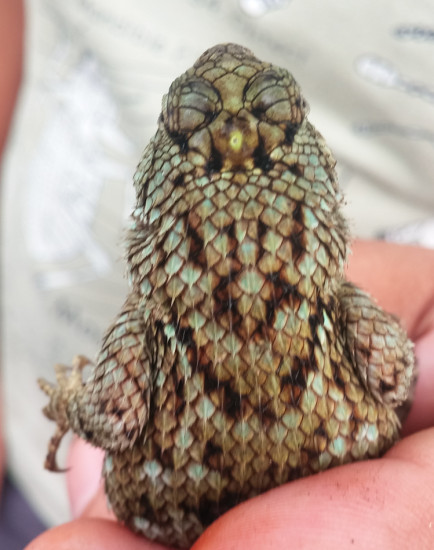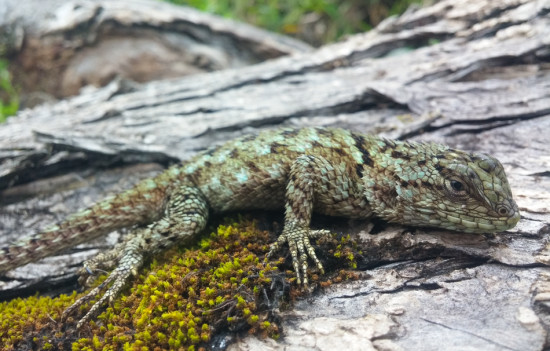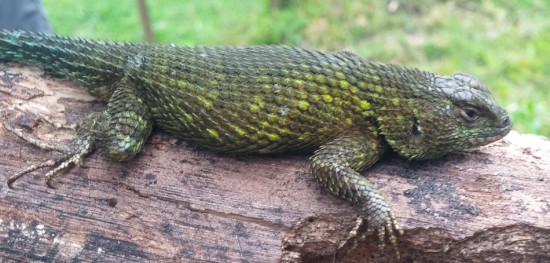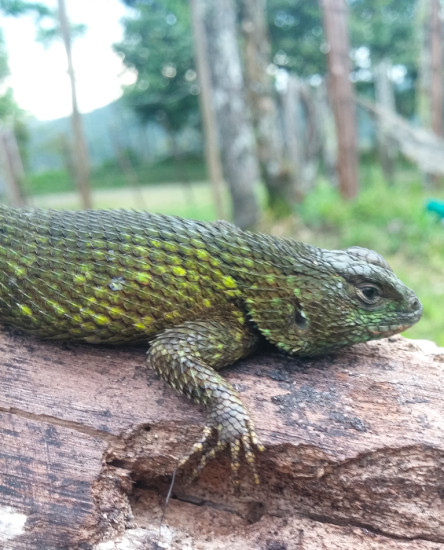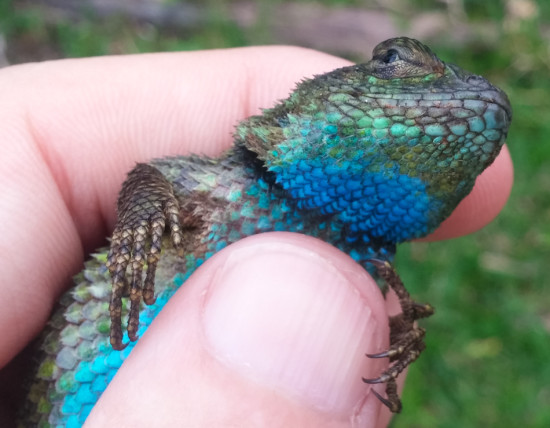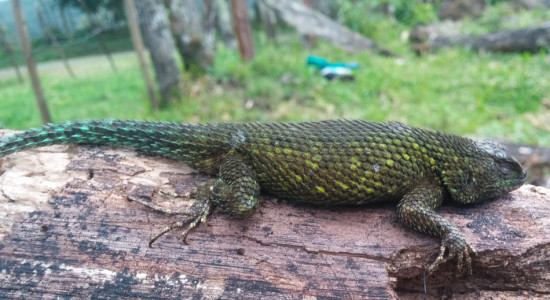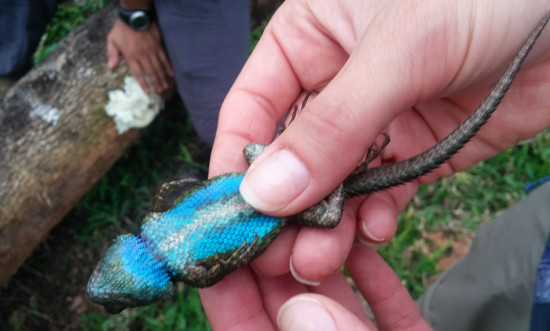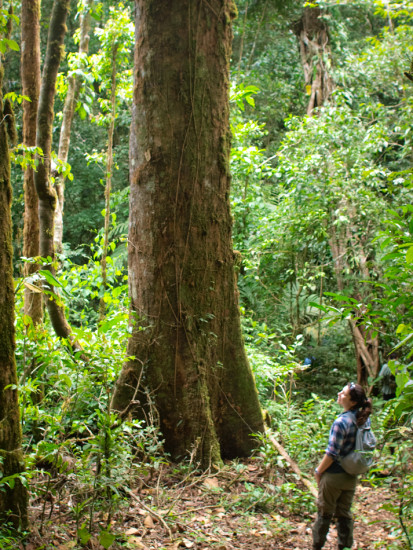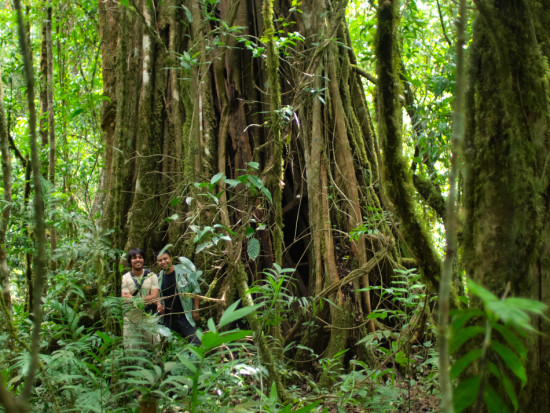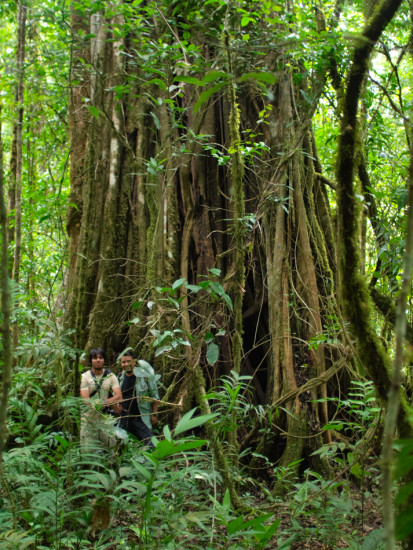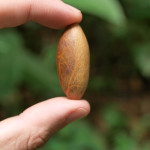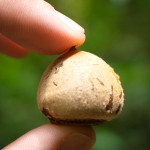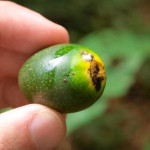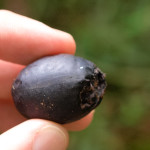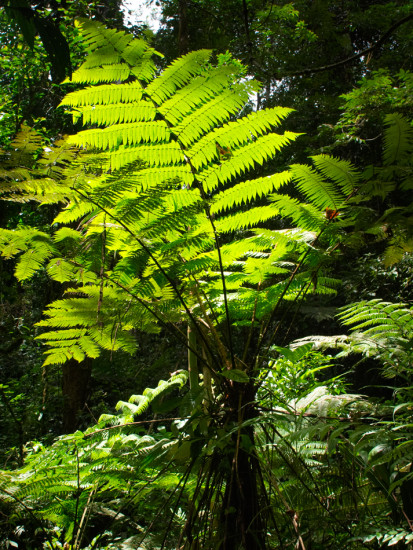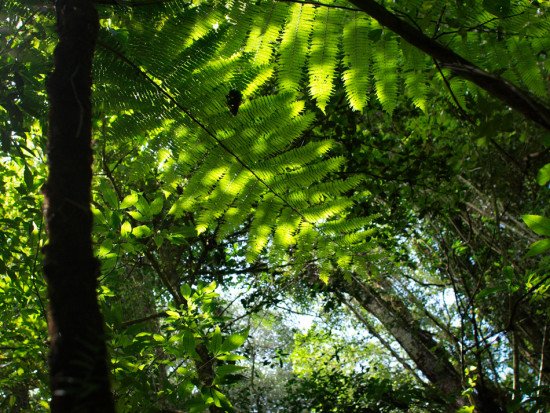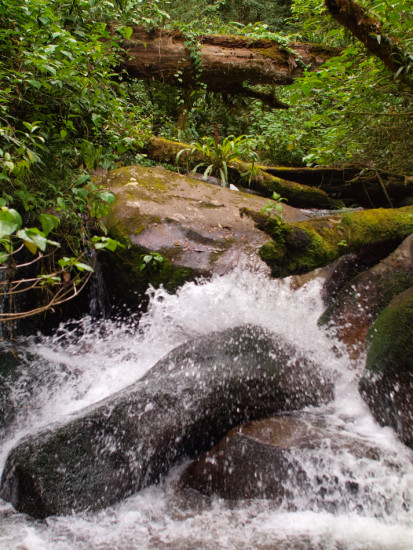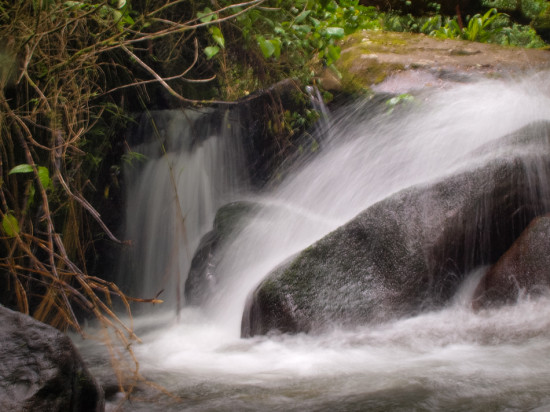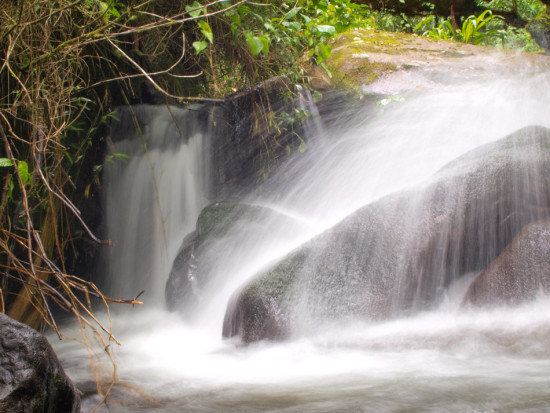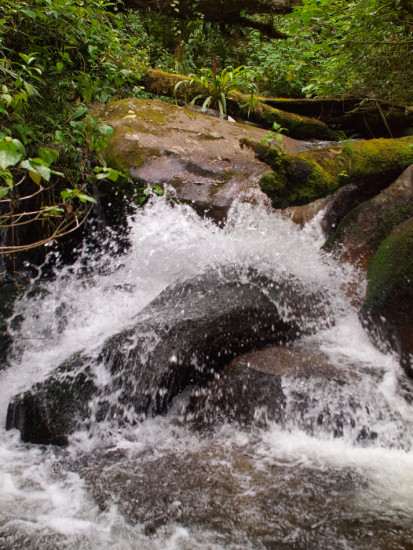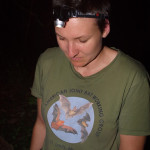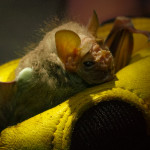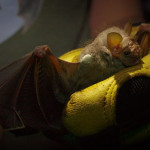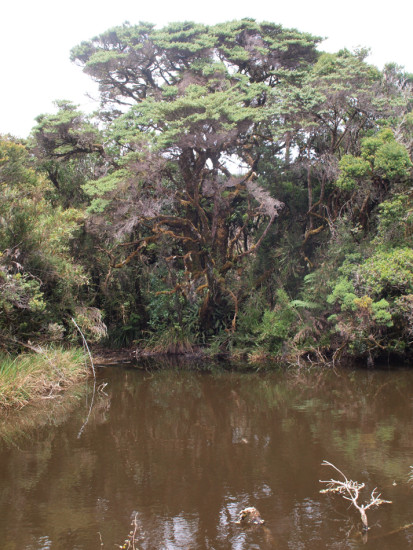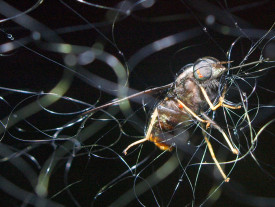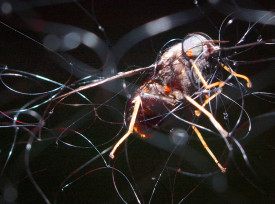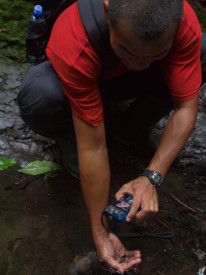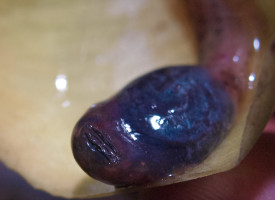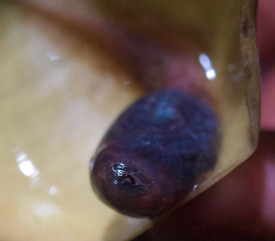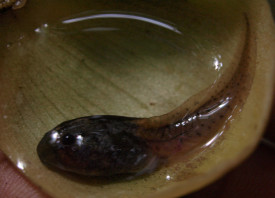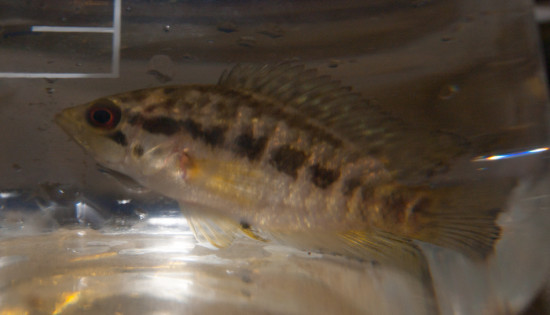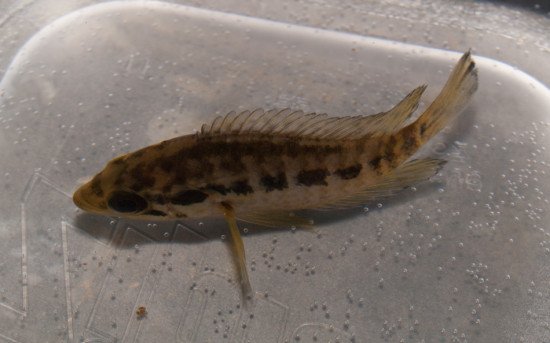Sceloporus malachiticus is common in open areas >1500 m in elevation in Costa Rica. They are fast and skittish, so these individuals were a team effort in their catch. While S. malachiticus is viviparous, giving birth to live, developed young, other Sceloporus species are oviparous, laying small eggs and burying them in the soil. It’s thought that vivipary is common in lizards living at high elevations because it allows the females to better thermoregulate their developing young-that is, a gravid female can move her internal young around in her environment to regulate their temperature.
Images
Some large trees at Las Alturas
Lindsay, Juan, and Cristian enjoy some of the large trees of La Amistad International Biosphere Reserve.
Seeds from the forest
A few seeds/fruits from Las Alturas.
Tree ferns from Las Alturas
Tree ferns are a fascinating, diverse, monophyletic group of ferns in Order Cyatheales. From my anecdotal observations, they seem to thrive in wet secondary forests and some anthropogenically disturbed areas.
Many individuals have spines along their trunks and fronds, so while they look quite beautiful, especially from underneath, slipping around in the muddy under-story with them around is dangerous—I’ve reached for a few trunks, only to quickly pull back after a poke.
The individuals pictured here may be of genus Cyathea, as were the previous photographs I’ve posted.
Rio Bella Vista
A cold mountain stream draining part of La Amistad Internation Biosphere Researve accessible from Las Alturas Biological Station.
I visited the same site in 2013 and took a dip… both this year at the previous visit.
The Wrinkle-faced Bat
One of the ugliest bats on the planet, the wrinkle-faced bat Centurio senex was caught at Las Alturas by Rachel and her students while mist netting at Las Alturas. The face of the bat may help in directing and manipulating sound waves for echolocation. There are also striations on the bats wings, although I’m unsure of their function.
Pond at Cerro
Tabanid deer fly with mites
A Tabanidae deer fly captured by a mist net (set up for bats) as it buzzed around myself and other researchers at Las Alturas field station. Several small, red and orange mites have colonized the fly, including the fly’s compound eyes. It was somehow satisfying to see these possible parasites on the flies…as they are parasites of humans and other vertebrates.
Tadpoles in Quebrada Cerro
A large tadpole from Quebrada Cerro in Las Cruces. This could be a tadpole of the brilliant forest frog (Lithobates warszewitshii), but I haven’t keyed it out.
Tadpoles were abundant in this stream, which drains primary wet forest, whereas they are fairly scarce in other streams in the preserve, possibly because fish didn’t appear to be present in Quebrada Cerro–in most other streams, fish, particularly the guppy, are abundant.

